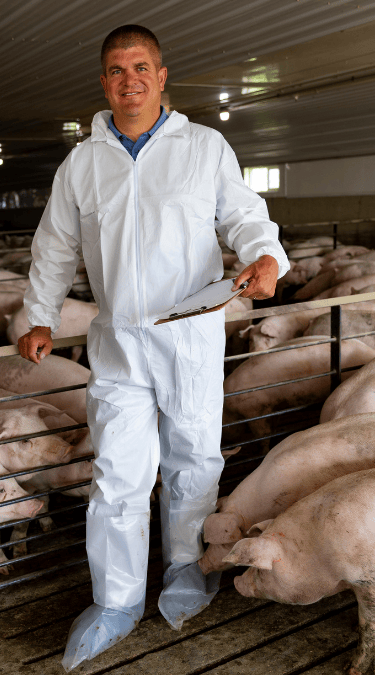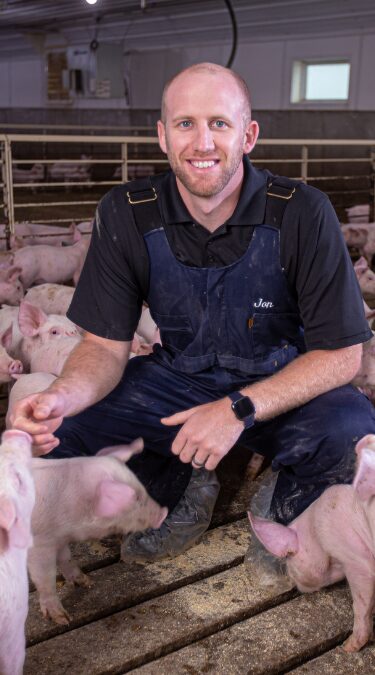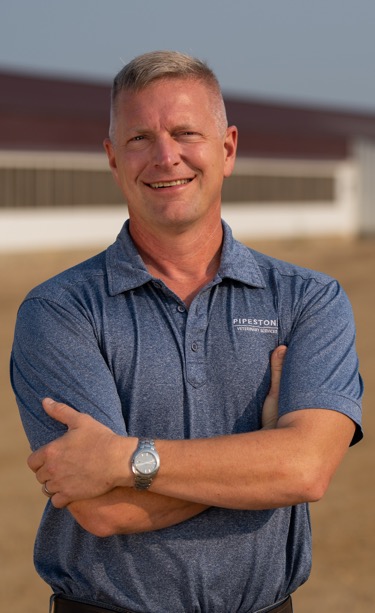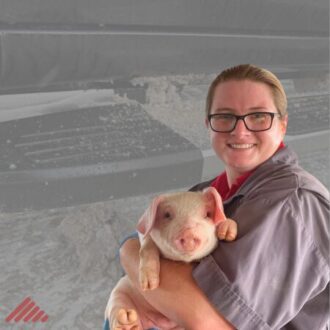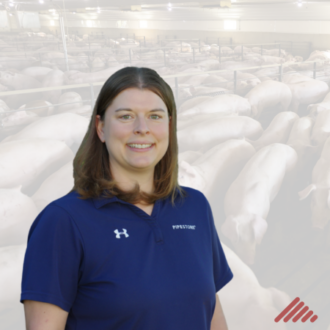Swine nursery diets encompass less than 20% of overall feed cost. However, we know that those first 6 weeks on feed have the biggest impact on overall performance. So, the question becomes, does investing more in your nursery diet pay off in the long run?
Tokach et al., 1992 outlined the impact of the first week of postweaning performance on day 56 weight and market weight (Figure 1.). This still stands true today based on recent trials. You can assume that for every additional pound coming out of the nursery, you’ll see about a two-pound heavier market pig. This highlights the importance of nursery average daily gain (ADG) and getting pigs off to a good start.

Recent Research Trials
As wean age has increased to 23-25 days of age, we often get the question from producers, “How can we reduce nursery feed cost?”. This question was internally evaluated in 2019 on a 20-day-old pig versus 25-day-old pig feeding a high, standard, or low-complex diet. In general, complex diets have been shown to increase feed intake and average daily gain in nursery pigs. We saw those same results in the first 7 days of performance (Figure 2). Complex diets are characterized by alternative protein sources, higher lactose, and other specialty feed ingredients. They typically perform better in the face of a health challenge.

Over the last few years, higher incidences of E.coli breaks have resulted in higher death loss and poorer gains in the nursery. To help mitigate some of these enteric challenges we tend to focus on lower crude protein diets, different fiber sources, acids, and the use of zinc oxide. These formulation modifications can add up in cost, however. Every 1% increase in nursery mortality costs the producer about $1/pig. Therefore, the producer and swine nutritionist need to decide how much nutritional intervention cost is added to offset the mortality.
Along with nutritional modifications, water acidification has helped lower gut pH and limit gut bacterial growth. Two previous internal trials have shown an improvement in removals and mortalities with water acidification during the nursery period (Figure 3.). We are still working to further understand ideal water pH and its impact at each stage in the nursery.
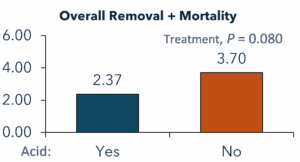
Although the initial feed cost in your early nursery diets is expensive, we have to think of them as an investment in lifetime pig performance. Of course, these diet improvements can fail without the help of the caretaker and production team. Getting the right feed to the right pig and ensuring the environment is comfortable will help get the pig off to the right start. This also allows you to maximize your margin over feed cost.
